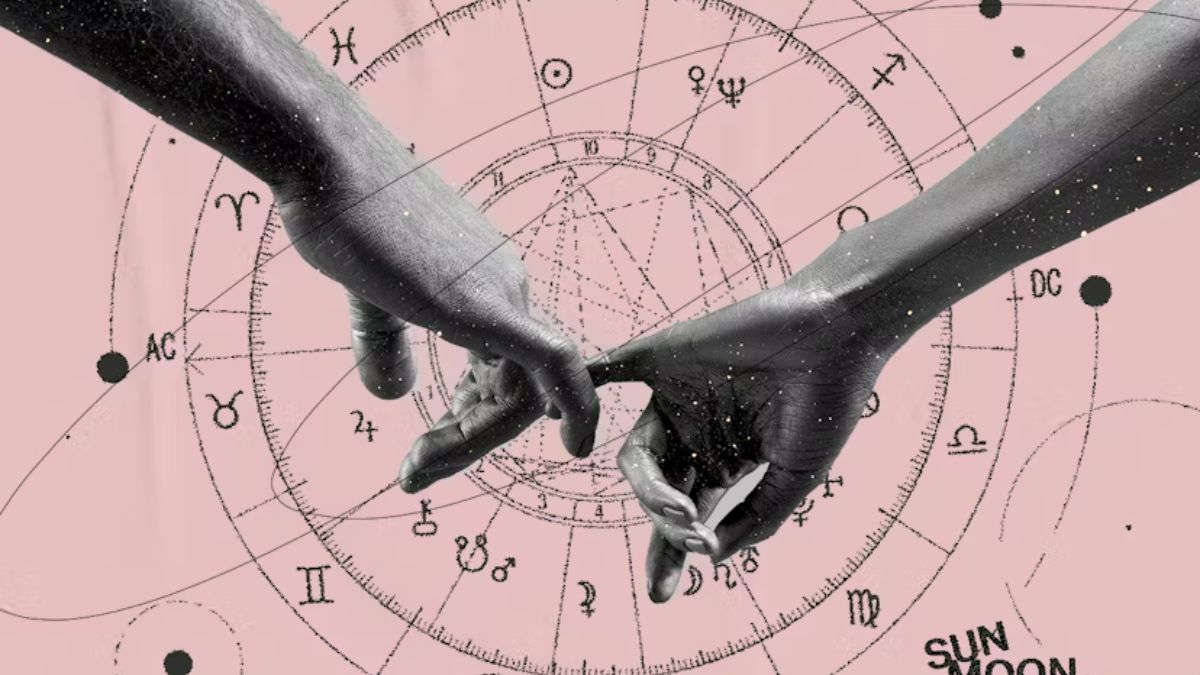Ever ask yourself, why you just click with some people but others are a constant battle? Astrology has this neat tool called synastry, or relationship astrology, that can tell us that. It’s sort of comparing two individuals’ birth charts to understand how they could match up, get along, challenge each other, and simply their general vibe together – whether it’s romantically, just friends, family, or even coworkers. It’s much deeper than simply your sun sign and considers how all the planets and significant points in your charts talk to each other.
Building the Cosmic Maps:
Essentially, synastry involves placing one individual’s birth chart over the other. This reveals where each person’s planets and significant astrological locations (such as their ascendant) fall in the other individual’s chart houses, and what type of angles (aspects) the planets form to one another. These interactions reveal a close description of how two individuals may be able to perceive one another as well as the relationship itself.
Why Planetary Angles Are So Important in Relationships:
The angles (aspects) between people’s planets in synastry are absolutely vital. Just as aspects in your own birth chart reveal what is happening inside of you, these “inter-aspects” reveal the energy transfer between two individuals.
Conjunction (0°): Energies mixing together extremely powerfully. Planets that are conjunct in synastry can translate to strong attraction, mutual interest, or even potential conflict depending on the involved planets.
Sextile (60°): Everything feels relaxed and harmonious, indicating places of natural empathy and support. These tend to be opportunities for both individuals to develop.
Square (90°): Indicates tension, conflict, and challenge. Squares create friction but also can motivate you to develop and change if you manage them appropriately.
Trine (120°): Everything feels natural, relaxed, and there’s a ease of understanding. Trines in synastry tend to indicate easy places and mutual enjoyment.
Opposition (180°): Displays attraction and projection. Oppositions might have you believing the other is the missing piece of yourself, but can also result in conflicts if you do not respect your differences.
The particular planets involved within these angles are crucial. For instance:
Sun-Moon Aspects: Indicate how well your inner selves and emotional needs along. Favorable aspects (conjunction, trine, sextile) tend to indicate profound understanding and support, whereas challenging aspects (square, opposition) may indicate underlying tension in the way you express yourselves and your feelings.
Venus-Mars Aspects: Tend to be about romantic and sexual attraction. Positive aspects indicate strong chemistry and mutual desires, while challenging aspects may indicate sexual tension or variations in how you experience intimacy.
Mercury Aspects: Indicate how easy or difficult communication and intellectual rapport are. Positive aspects indicate easy and empathetic conversations, while challenging aspects may indicate misunderstandings or varying styles of communication.
Saturn Aspects: Tend to bring responsibility, commitment, or perhaps feeling trapped in the relationship. While difficult Saturn aspects feel burdensome, positive ones can stabilize and cause the relationship to endure.
Jupiter Aspects: Indicate areas of mutual growth, optimism, and good fortune in the relationship. These tend to bring a sense of expansion and happiness.
Outer Planet (Uranus, Neptune, Pluto) Aspects: May introduce huge changes, strange energies, or super deep, spiritual connections to the relationship. These tend to indicate important life changes or soulmate sensations, but may also introduce turmoil or illusions.
What the Houses Indicate About the Relationship:
The houses in synastry indicate where in each individual’s life the other individual’s planets make themselves felt. For instance:
If your Venus is in your partner’s 7th House of Partnerships, it may indicate your endearing and captivating features are felt so strongly within their world of partnerships, possibly suggesting romance or seeking commitment.
If your friend’s Mars in your 1st House of Self, then their pushy energy and ambitions may actually impact the way you perceive yourself and express yourself.
Planets in the more personal houses (1st, 4th, 7th, 10th) tend to have a larger influence on the way the relationship unfolds.
More Than Just Romance: Synastry in All Kinds of Relationships:
Although we tend to think of it for romantic relationships, synastry is useful for any kind of connection:
Friendships: It can indicate why some friendships are easy and nurturing, with shared interests and communication styles standing out.
Family: Comparing family charts can reveal family dynamics, how you typically interact, and where there may be conflict or harmony.
Work: Synastry can assist in determining if a business partnership would be a good idea, revealing who brings what skills and where you may conflict.
What Synastry Can’t Tell You:
Keep in mind that synastry reveals potential vibes and tendencies, not necessarily what will occur. Free will, how mature you are, and how much effort you put in really matters in any relationship. A tough synastry chart does not indicate a relationship doomed to fail but rather where you may need to get to know each other more and work harder. Conversely, a chart full of beneficial aspects does not necessarily mean it will be perfect, because most often we learn and become better people by experiencing challenges.
Learning About Your Connections
Reading synastry can provide you with some very profound insights into why we relate to others the way we do. Understanding how the planets relate to one another and where they fall in each other’s charts, we can have a greater understanding of the special energy that binds us to others and assist us in getting along with greater awareness and compassion. Whether you’re interested in a new love or simply want to know more about your existing relationships, synastry provides you with a strong astrological means of viewing the cosmic currents that influence our relationships with others.













